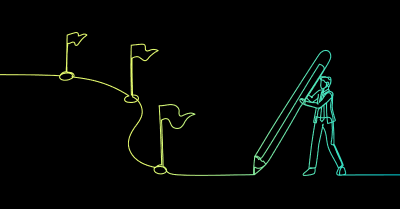Insurance Technology Changing the Industry
From robotic process automation to blockchain, technology is changing how the insurance industry operates. As carriers and other insurance organizations continue to accelerate their digital transformation efforts, let’s take a moment to break down a few key technologies currently impacting the industry today and some that are likely to do so in the future.
Telematics and the Internet of Things
Telematics devices, which can be installed in cars and other vehicles to track driving behavior such as speed and miles driven, are allowing auto insurers to offer usage-based insurance, which leverages this data to analyze driver safety and determine appropriate pricing.
In the future, the internet of things—which refers to internet-connected wearable and in-home devices like smart watches or thermostats—could also be used to track data on personal health and safety, enabling similar models to be offered for property and casualty and health insurance.
Blockchain
Blockchain is a method of storing data, but unlike the databases the insurance industry uses today, blockchain is designed to be more difficult to tamper with, less prone to errors in data, and more reliable. These benefits are accomplished through methods such as hashing, consensus mechanisms, and decentralization.
While blockchain is not yet widespread in insurance, it may eventually be applied to areas in which data needs to be accessed or modified by multiple parties on demand, such as issuing certificates of insurance, accounting, and health insurance.
Artificial Intelligence and Machine Learning
Artificial intelligence (AI) and machine learning are the driving forces behind many of the innovative tools used by the insurance industry today. An AI is essentially a computer system that can interpret data and carry out the appropriate response without the help of a human. One example is optical character recognition, a type of software that uses AI to extract text information from images and scanned documents. This is often used by insurance organizations to complete high-volume tasks like claims validation.
AI and machine learning are also being used to streamline claims handling and underwriting, and according to McKinsey, will enable these processes to be mostly or fully automated by 2030.
Robotic Process Automation
Robotic process automation (RPA) is one of the most common forms of insurance technology in use today. RPA refers to software bots that can perform standardized, repeatable, and high-volume tasks and processes like data input and document gathering. There are two kinds of RPA: attended and unattended.
- Attended RPA refers to bots that can take over select steps in a larger process, but still require humans to complete other aspects of the work.
- Unattended RPA refers to bots that can complete entire processes on their own. Note that even with unattended RPA, humans are often still involved to make sure the bots are functioning correctly.
When combined with AI, RPA can even complete more complex tasks, such as fielding customer queries as a chatbot.
Taking insurance to the next level
Technology is helping insurance professionals perform their roles faster and more efficiently and is enabling the industry to better analyze risk. Read our other blogs below to find out more about the future of insurance, how to discover opportunities for automation in your organization, and how the pandemic affected property and casualty insurers’ digital plans.
Read More About Insurtech and Digital Transformation
- Future Insurtech Trends: Q&A with Sathya Sethuraman of UiPath
- How To Identify Automation Opportunities
- How the Pandemic Shaped P&C Insurers’ Digital Priorities
Want to know how ReSource Pro can help you leverage insurance technology like RPA and AI? Let’s talk.


